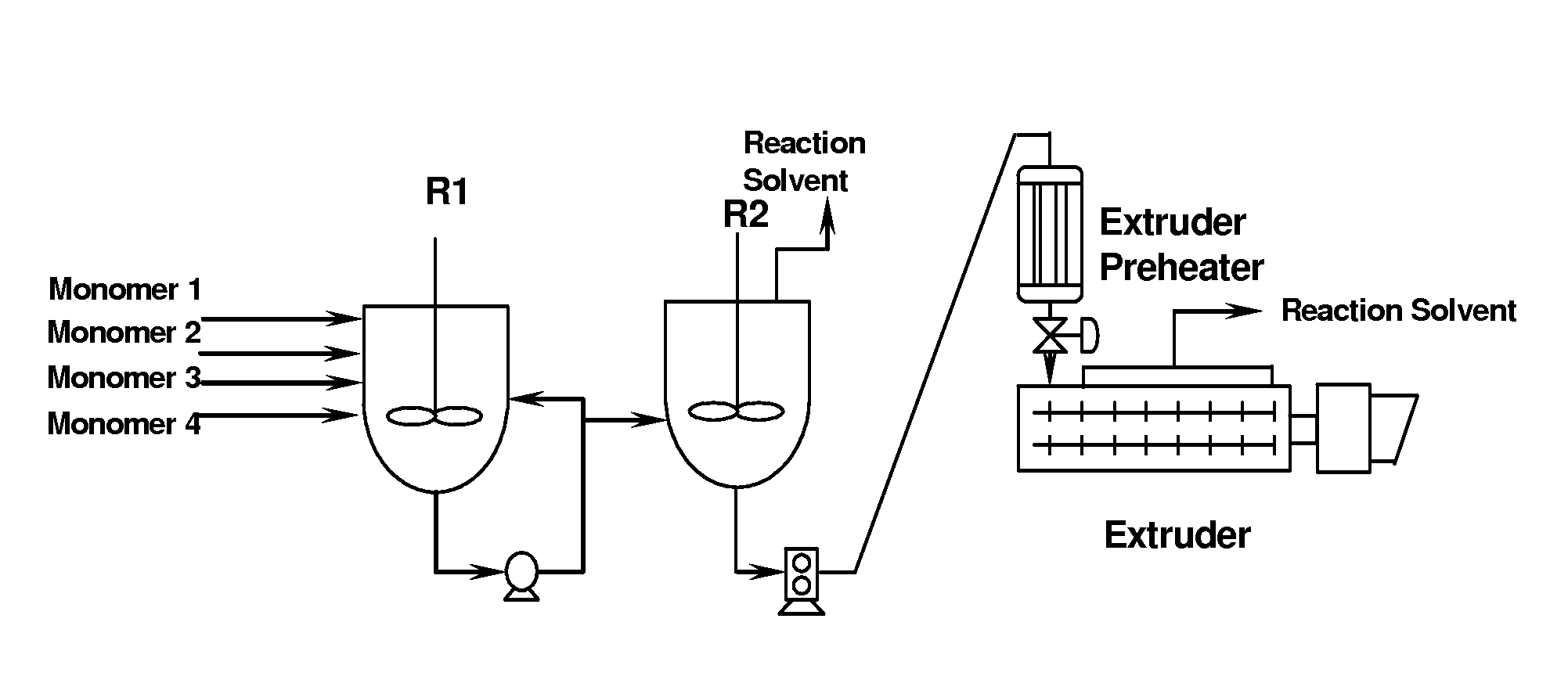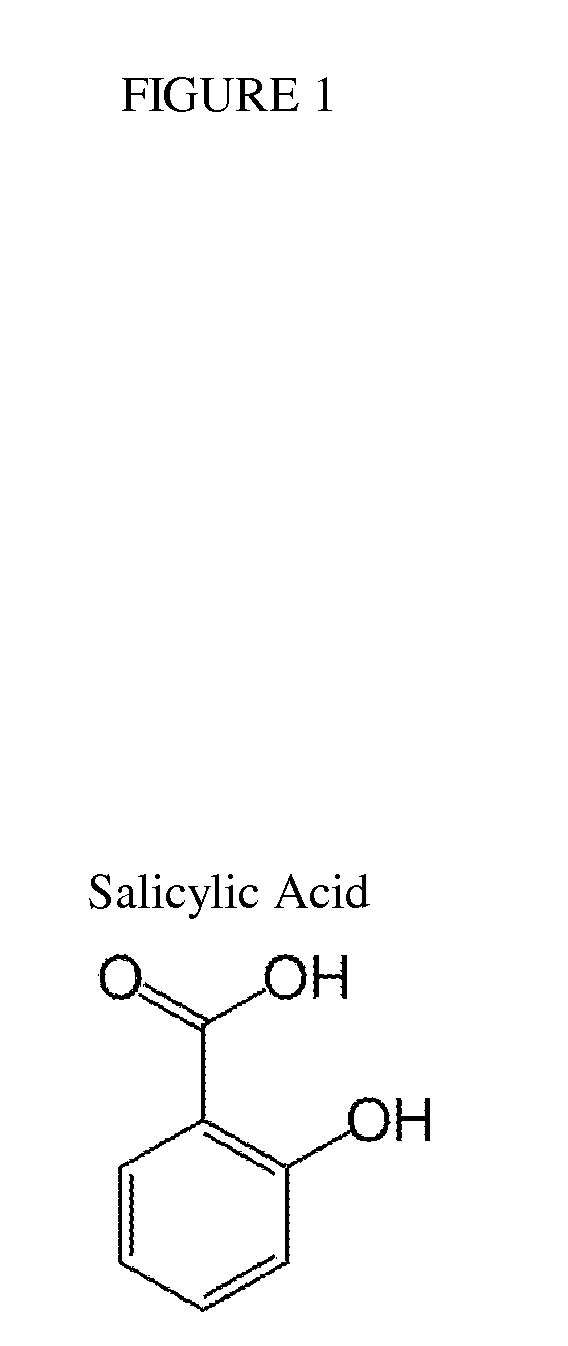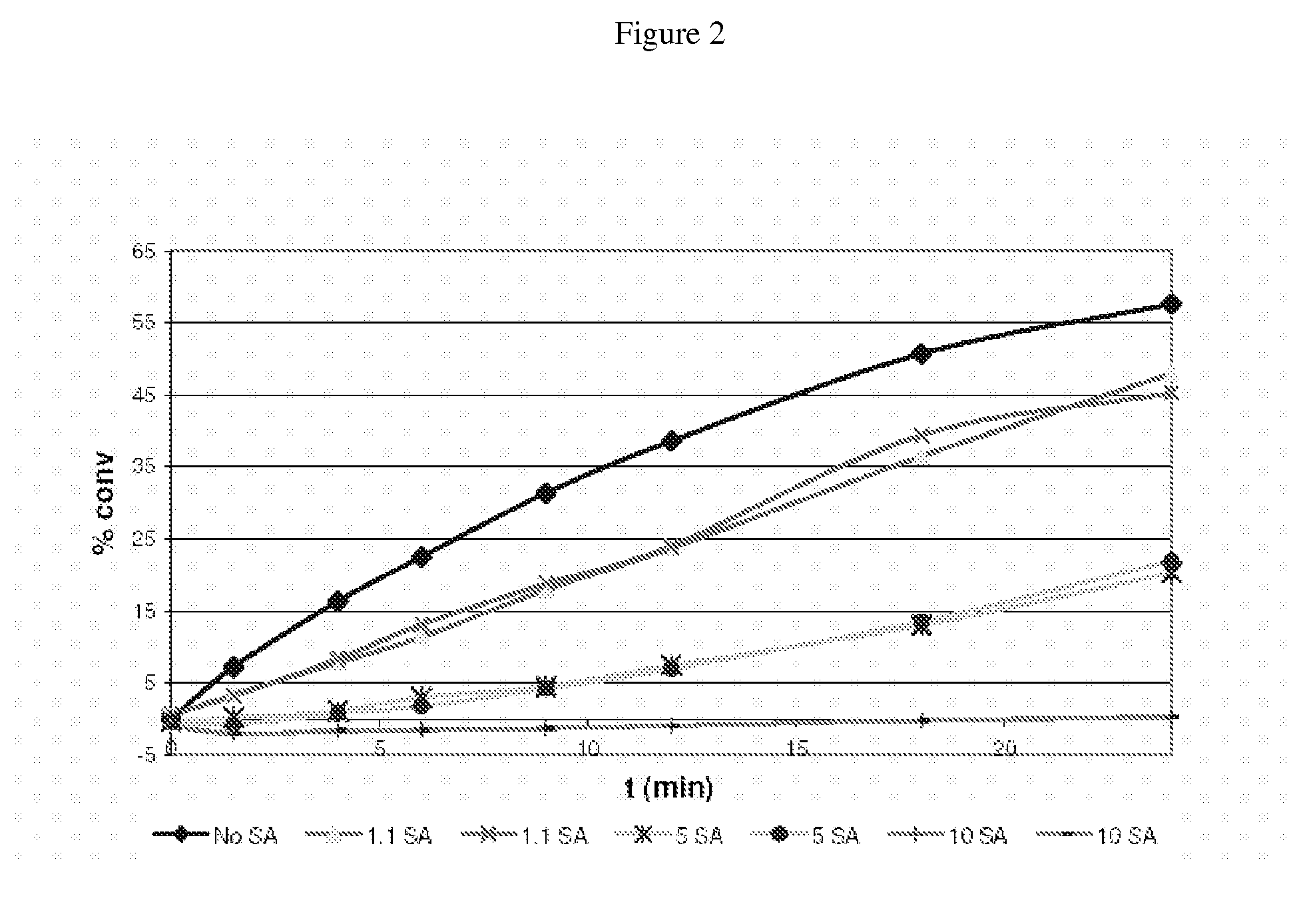Process for the production of polycarbonate using an ester substituted diaryl carbonate
a diaryl carbonate and polycarbonate technology, applied in the field of polycarbonate, can solve problems such as process instability
- Summary
- Abstract
- Description
- Claims
- Application Information
AI Technical Summary
Benefits of technology
Problems solved by technology
Method used
Image
Examples
example 1
Reactivity Testing (RT)
(1) General RT Procedure:
[0183]Ester-substituted phenols such as methyl salicylate (MS) or other alkyl, aryl, or alkaryl salicylates are produced as a condensation byproduct during the melt manufacture of polycarbonate using an ester substituted diaryl carbonate together with diol monomers and optionally other monomers such as di-esters, di-acids, or monofunctional phenolic chain stoppers.
[0184]A reactivity test (RT) is similar to this process but it is not a polymerization. A RT is actually a melt transesterification between an alcohol, for instance para-cumyl phenol (PCP) and an ester substituted diaryl carbonate. Samples are taken at specific times. The concentration of the ester substituted phenolic byproduct from this reaction is then measured and plotted over time. In this example bismethylsalicylcarbonate (BMSC) was used.
[0185]The set-up used for the RT is a 3-neck round-bottom flask. It is immersed in an oil bath to control the temperature, and it is e...
example 2
Melt Polymerization Testing and Spiking of SA
(1) General Procedure:
[0189]Standard small scale melt polymerization batch experiments using BMSC were carried out according to the conditions described in Table 2.
[0190]The following materials were used in this example. 25 mass % TMAH solution: Sachem Inc, Part Code 322, Lot #C02124X65800. 0.5 mol / l NaOH, Acros, J / 7630C / 05. Bismethylsalicylcarbonate (BMSC) and Bisphenol A were supplied by GE Plastics.
[0191]The batch polymerizations were carried out in a small scale reactor system. This system has 2 identical glass tube reactors which have the same vacuum system. This melt polymerization unit is equipped with a high vacuum system to remove all methyl salicylate formed as a byproduct in the polymerization reaction. The methyl salicylate is contained in the condensers.
[0192]In this system the glass reactors are charged at ambient temperature and pressure with the solid diol monomer, BPA, and the solid ester substituted diaryl carbonate BMSC...
example 3
Additional Melt Polymerization Testing and Spiking of SA
(1) General Procedure:
[0195]Pilot plant results for BMSC terpolymer formulation BPA / HQ / MeHQ 33 / 34 / 33 (mole %). The presence of SA affected negatively the conversion in R1 (Reactor 1 as shown in FIG. 4) (i.e. the oligomerization stage) as shown in the graph shown in FIG. 3. Under normal operating conditions of a plant run with 40 ueq of TMAH, the amount of MS formed in R1 stage is around 32%. As can be seen in FIG. 3 if the concentration of SA is above about 50 ppm it can reduce the conversion significantly until 0% conversion with increased concentrations of SA, e.g. above about 100 ppm, in BMSC.
(2) Discussion:
[0196]The content of the phenolic byproduct methyl salicylate (MS) in R1 is a measure of the extent of conversion in that reactor. Typically the amount of MS in R1 is about 32 mass %. As can be seen in FIG. 3, the presence of the carboxylic acid substituted phenolic compound SA severely negatively affects the conversion i...
PUM
| Property | Measurement | Unit |
|---|---|---|
| molar ratio | aaaaa | aaaaa |
| molar ratio | aaaaa | aaaaa |
| temperature | aaaaa | aaaaa |
Abstract
Description
Claims
Application Information
 Login to View More
Login to View More - R&D
- Intellectual Property
- Life Sciences
- Materials
- Tech Scout
- Unparalleled Data Quality
- Higher Quality Content
- 60% Fewer Hallucinations
Browse by: Latest US Patents, China's latest patents, Technical Efficacy Thesaurus, Application Domain, Technology Topic, Popular Technical Reports.
© 2025 PatSnap. All rights reserved.Legal|Privacy policy|Modern Slavery Act Transparency Statement|Sitemap|About US| Contact US: help@patsnap.com



